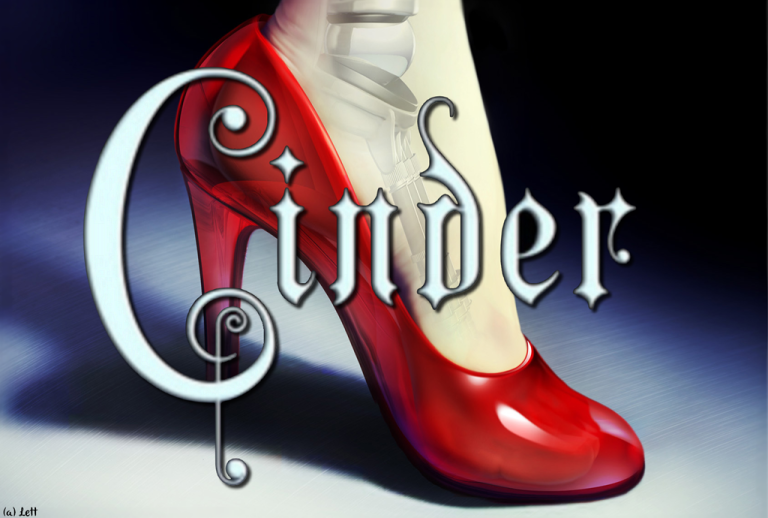Using a Scene Template to Craft Perfect Scenes
Last week I introduced you to my scene template. I can’t emphasize enough how helpful it is to lay out all (or most) of your scenes before you start writing. Or if you’ve already written a rough draft, how useful it is to summarize each of your scenes in the scene template and look carefully at what you have.
Outlining your novel, scene by scene, is like crossing a bridge. On one side you have all your scene ideas in a jumble. On the other side is your complete novel that tells a beautiful, tight story. To get across that daunting chasm to the other side, you need to take one step after another, steady, strong, and purposeful. Each scene is a step to the finish line, and none should veer you in the wrong direction (over the railing into the brink!).
In addition to editing and critiquing manuscripts, I review scene outlines. Many of my clients have gone on to write terrific novels using this scene template. Some have me critique their outline crafted within the template. Others use the template to work out their scene details, then write a briefer scene outline with just one paragraph per scene (including the key points in their paragraphs).
I encourage you to have me go over your material and give you honest, constructive feedback so you can see how on track you are with your scene structure. Contact me so we can discuss!
A Wise First (or Next) Step
Whether you’ve already written a rough draft, reworked many drafts, or are just plotting out your novel, you can benefit from this process. Instead of paying upward of $1,000 or more to have your manuscript critiqued, first consider putting together the scene outline and having me critique that. It usually takes me from three to five hours for me to review an outline. That’s going to cost a whole lot less than a full critique. And honestly, you are going to benefit from this much more.
Why is that? Because having help to hammer out the problems with your story structure is the best first step. Especially if you haven’t even written any scenes yet. The scene outline will reveal nearly all the main problems with plot and character development. And if you fix your story before you write (or rewrite) it, you will save yourself weeks or months of heartache and frustration.
Like being given a road map, a scene outline will chart your course clearly. There will still be plenty of room to take side trips and encounter new places and people, but you will stay on course with purpose and vision.
Don’t think outlining will curtail your creativity. It won’t. If anything, it allows the framework and room to be as creative as possible without worrying if what you are writing is going to work in your story. With an outline, you already know the scene idea works. You just need to write it effectively.
Here’s a Great Example of My Scene Template in Use
One of my clients is currently writing her novel after working hard on her scene outline. She went through numerous iterations of her outline until she had it just right. Working with her at the outline stage, I was able to point out what needed work, what was missing in plot or character development, what scenes should be reordered.
At the scene stage it’s much easier to move scenes around. From the template, you can transfer each scene’s summary onto an index card, then lay out all the cards on a table. If you are using the three-act structure, you can lay the cards out in three long rows. Getting a “big-picture” view of your scenes can really help you see what’s missing or in the wrong place.
Here is one page of my client Christine’s complete outline (you can download her entire first act here, with her permission):
Act 1 Scene 3
Locale: Eleanor’s laboratory, Institute of Medical Genetics, London
Time of day: 17:00
Time of year: November
Weather: cold, grey, spots of rain starting to splash on the windows
How much time passed since previous scene with this character: 7 hours
POV character for the scene: Eleanor
Scene Summary:
Eleanor is helping one of her PhD students with a problem.
Franciscka comes in and gloats about her chances of tenure.
What main way is the story advanced? What new plot points are revealed?
The 25 year old Franciscka introduced as the spiteful, bitchy protégée of McMahon (tall, very athletic figure but distinctly on the skinny side; rather inconsequential, drawn facial features and small pale eyes; but very beautiful long blonde hair, of which she is clearly extremely proud: always flicking it about. However, Franciscka also has badly bitten nails and a nervous habit of twisting her hair while she speaks to hint to the reader that she isn’t quite as self-assured as she likes to make out: in fact she is psychologically very brittle, as is shown later. )
Rivalry between the two women for tenure is made explicit.
Eleanor’s patience and mentoring skills are revealed.
Eleanor dry comment to Franciscka that “polishing” data may be a widespread practice in research but it will never lead to anything constructive or worthwhile, and will always be found out in the end anyway (this is important, as it shows that Franciscka has been explicitly warned by someone about the risks of engaging in academic fraud.)
What conflicts/obstacles are presented in the scene?
Eleanor dislikes Franciscka on all levels (she is shown as a bitchy unpleasant person, who is not at all averse to bending the rules to get what she wants. Also, much to Eleanor’s disgust, she has no scruples whatsoever about experiments on animals, a practice which Eleanor firmly believes is wicked and totally unnecessary in modern science. Here, Eleanor quotes a saying she read in one of her mountaineering history books, which very much appealed to her: “The journey is the aim.”)
Franciscka is shown to be extremely frustrated by Eleanor, as she cannot surpass her scientifically and Eleanor is not vulnerable to Franciscka’s attempts to make her feel physically inferior (Eleanor was resigned long ago to the fact that she is not beautiful and does not resent beauty in others).
How does the POV character change or grow by the end of the scene?
Eleanor is more determined than ever to get tenure as she is disgusted by everything Franciscka represents.
THE high moment or key info revealed in scene:
When Franciscka makes her determination to get tenure explicit, and the obstinate Eleanor thinks to herself that no: she is damn well going to get it.
Important backstory bits revealed in scene:
Eleanor and Professor Pearson considered “overscrupulous” by McMahon’s cronies in terms of their ethics.
Lots of medical researchers “polish” their research data to get them published.
Eleanor has a reputation for helping struggling young researchers (or “losers” in Franciscka’s opinion) achieve their potential (foreshadows efforts with the floundering PhD student, Rhys Evans, at St Gilbert’s Psychiatric Hospital in Act 2).
Eleanor takes a personal interest in her research patients and their progress (revealed in a comment to her PhD student about a seriously ill 4 year old girl who is being followed up as part of her research. Eleanor always imagines that the sample she is handling at any one time is from that little girl, as this motivates her tremendously. NB She has never actually seen the child, as for data protection reasons, clinical data and laboratory data must be kept strictly seperate. Blood samples are always anonymized, so that the scientists conducting the laboratory analyses cannot identify who they came from. This child is mentioned again in Acts 1 and 2, as I am using her case to highlight the importance of Eleanor’s research work and thus tenure, i.e. the child acts as a symbol of Eleanor’s beloved research work.)
Franciscka couldn’t care less about patients: she sees them purely as a means of obtaining research data.
World-building or specific setting/locale details brought out:
Orderly, efficient atmosphere of Eleanor’s lab and the respect and affection shown to her by other lab staff (this shows that despite the fact that on the surface, Eleanor appears gruff and grumpy, she is very well liked). Also foreshadows her turning around of the morale in the psychiatric genetics lab at St Gilbert’s.
Notice the details Christine includes. Many of these types of details can be added in as you think of things you need to include. Little by little, using the template, you can flesh out every single scene so that you have it in the right place in your story and it includes every little bit of information you need to make it purposeful—no, essential—to your story.
At whatever stage you are in with your novel, you can benefit by an outline critique. I charge this service by the hour, and you can be sure you’ll get a thorough analysis and critique of your story. Submit an outline for just a few chapters or your entire story. Your story will greatly benefit from this, and I bet you’ll not only be surprised at what you’ll learn through this outlining process, you’ll become a better scene writer.
Are you willing to take the challenge? Contact me to set up a date for your scene outline review. Then get to work.
Next week, we’ll start breaking down scenes into sections, and all the other posts this week will complement what you’ve been learning about scene structure. I want you to nail this, and I know you can. Learning scene structure does take time and work, but if you want to write great novels, you gotta know how to do this. There’s no way around it.
What are your thoughts on using an outline? Have you used one? How has it helped you in particular?












I’m curious if any pantsers have used this method or whether they found it to still be too structured for them. I’m a pantser myself and have decided to go the serial fiction route (writing in real-time on my site, not posting a completed novel in parts, that is). If you’re writing in this format, especially if you’re expecting feedback from your readers as you go along, I’m wondering if outlining scenes would be worth it?
Maybe someone will comment on that. I don’t encourage “pantsing” at all. I feel, as do most good writing instructors, that to create something so complex as a novel, you really must do some hard prep work to get those plot and character elements strong. The successful authors I know who “pants” their novels end up writing numerous full drafts, which they discard, and waste months of their life trying to figure out their story. How much better and more time efficient to plan the framework first. It’s like throwing a bunch of materials together to build a house without any blueprint–just a vague idea of how you envision the finished product. The result is almost always a disaster. So I really encourage those who resist doing the hard work of developing a solid story to at least try using a scene template and outline the major scenes of the story.
Elizabeth George suggests getting about 10-15 key scenes down (figured out) before writing. I aim for more like 30-50. But regardless of the number, having those key scenes in place, especially the 9-10 pivotal scenes (midpoint, plot points, pinch points, climax, inciting incident, etc.) is essential. Honestly, I’ve yet to see a solid novel that holds together that was written by “pantsing,” and I edit and critique more than 200 manuscripts a year. Just sayin’ …
This was extremely helpful to me. I have written two middle-grade fantasies and I have to admit that I used the ‘pantsing’ method for both. I am currently working on a third and I find that this one is not coming together as easily as the first two. I believe that this scene template method is what I need to do now. You’ve inspired me to give it a try. Thanks again, Susan.
Glad to hear it, Jeanne. And I’d be glad to help you with that outline!
You wanted a panster to take a stab? Here goes.
Of course, I appreciate and respect your opinion on this, but I differ with it. That is not to say you are wrong. I do believe that some amount of planning is desirable (though I didn’t always feel that way). That said, I believe it depends on how the person thinks.
Some of us are more organized than others, some of us need lists to go to the grocery store, while others do not. Some make lists to get through the day others of us operate in a more chaotic fashion. Neither is right or wrong. I tend toward the more chaotic, my wife needs lists.
When it comes to writing and most things I tend to plan as far as the headlights can see. To be fair I do often have a good idea of where the whole thing goes but a scene by scene plan seems absolutely antithetic to creativity for some of us. It would be like going to the grocer with a list of items then finding Brussel Sprouts are on a blowout and not being free to change our minds on tonight’s side dish.
Funny that you should mention house building. Although I have yet to build an entire house (haven’t had the need), I have remodeled two houses over the years without a single set of plans. No, I don’t recommend others do it, but I bet others could.
I also wanted to point out that Panster Stephen King has managed to turn out a few things. Despite what anyone may think of him, his novels hold together pretty well. They also sell well, which, for many writers the goal.
Just one person’s seat of the pants opinion of course.
As most writing instructors have noted, Stephen King, among others who write many novels and claim never to use an outline, are fully versed in their brains on novel structure. They do structure and plot as they go along, knowing, from decades of experience, when specific milestones need to occur. And, no my husband would never do any extensive remodel without some plans. Even a small remodel requires drawing out some specs, taking measurements, being sure you have all the materials you need, etc. Otherwise you waste time and make big mistakes. The whole idea behind doing some plotting in advance is to ensure you have a solid structure but, also for me, it’s to avoid wasting precious time. I know authors that write multiple drafts for more than a year before finally getting their plot figured out and writing a decent draft, and usually stressed under deadline and hating every minute of it. If they would just take maybe 3-5 full days to fully plot out their characters and story, think of all the time they would save and could use planting a garden, playing with their grandkids, and taking a long vacation …
“Pantsing” may be like Supreme Court Justice Potter Stewart’s famed definition of pornography: “I know it when I see it.” I readily confess I am not as disciplined as Susanne’s scene structure, but what I see in my mind is no less ordered than pen-to-paper. Some trial attorneys need a script to cross examine a difficult witness for hours…my script is in my head. I don’t think that makes me a pantser. Susanne edited a complex novel for me that involves two different time lines. Her advice to me was sage: ‘describe each scene on a sticky note and place it on a dry board. Then, you can see your novel, and move scenes around.’ (Of course, I had reams of notes about who was who and how I’d get from A to Z.) It was a great approach, and a nod to my slightly different way of writing. Just sayin’…..
Dennis, thanks! I’m sure all those years of law classes and writing briefs and devouring case studied helped you assimilate structure. Trial lawyers have to be great storytellers, and, from my experience, often make the best novelists. You are a perfect case in point!
I have never tried this but from the example offered I am sure I would benefit from the structure offered. Will try to do it on a novel being reshaped, and may well accept your invitation, once it is needle sharp. Thanks for your consistent advice. I read it all!
If the purpose of a novel is to engage the reader’s emotions in order to give them a meaningful vicarious experience that touches them mind, heart, and/or soul, then you as author have to determine what is at the end of the journey that will accomplish your specific goal. Before I even think of an outline or scenes, I develop my characters and determine the major benchmarks at the quarter marks. Only then can I begin to think of an ordering of specific scenes. And I know if I make myself write a scene without knowing its purpose and how I will achieve that purpose, I usually end up throwing the writing out. In computer programming, we called it a top-down method of planning. I like to think of it as zooming in on the story.
Does that inhibit my freedom? No! At each level, I can do whatever I want, and I have a way to evaluate all the what-ifs I come up with against how well they lead to the goal. If you’ve got a million choices with no evaluative criteria, you’re apt to settle for the first thing you come up with because there are just so many possibilities. With a goal in mind, you can explore more deeply several concepts and choose the right one.
The first time Susanne suggested I do an outline (before this marvelous template) I stared at the blank page and didn’t know what to do. I made up my own formatted scheme, much less detailed and on-point than Susanne’s, but it gave order to my chaos and I could start. ‘Write something,’ became, ‘answer this question’ and the creative juices got flowing. Also, if I’ve written out a scene—even if it’s not working I want to hang onto it because I put so much work into it. Outlines are easier to change when you come up with better ideas as you go along.
In filmmaking, the storyboard is the scene template. Peter Jackson called it a chance to practice shooting the movie cheaply before the actors and equipment all got there and every minute on set figuring something out cost thousands of dollars. Using this template will give you a chance to write the novel and see how you like it before you actually have to invest time to make each word exactly right. Anyway, that’s my take on using an outline. I have used this template, and I recommend it.
Thanks, Sara. Yours was the inspiration for my scene template. If you’d like to give me a portion of your scene template to share with readers in another post, I’d be thrilled to do that!
Plotter here (mostly). I usually write inline comments to myself about what to put into each scene as I write, but with this template tacked to the corkboard in my “cloffice” I can easily refer to it as I draft to make sure I haven’t left anything important out. Both this and the scene structure checklist will be helpful tools. Thanks!
This is terrific! I would find this very helpful, both for my own writing and for my clients’.
I tend to “pantz” on my own, yet am able to see outline and plot better for my clients. Is this odd, you think?
Thanks, Veronika. I’m the same. It’s always easier to see the problems with someone else’s story than your own!
I use outlines for everything in my novel writing. I keep the template format of a scene, but will write the essence of the scene without regard to the template. I then go back to the rest of the template(later), and fill in the required structure to make sure I have kept the scene in-line with the arc of character and the story. Once these are close, I then import my finished scene into the main body of the story. Ready for the next draft.
But where is the template?
All my charts and templates are on the resource page. But this is the download link for the scene template: https://www.livewritethrive.com/wp-content/uploads/2015/01/Scene-Outline-Template.pdf
Hi – thanks for a great post (just came across it). With the scene outline, would you recommend that every scene fulfils every element in the list (e.g. should every scene reveal some backstory etc.)
Tim
Hi Tim, no, I would only put in what’s important to the plot in that scene. Not all scenes need bits of backstory, but it’s natural for people to have thoughts pop into their head (backstory) triggered by present action. But it can clutter a scene to do that a lot. Hope that makes sense!
Great – thanks! Working through the list, it’s amazing what suddenly strikes me about every scene and what’s missing / can be combined elsewhere
This is Great! – Just came upon this outline … I sometimes I need just a steering in the right direction, then I make the necessary adjustments to fit my needs. Thank You so much for this.